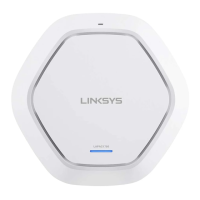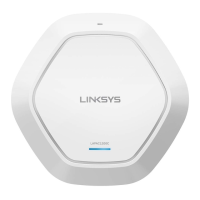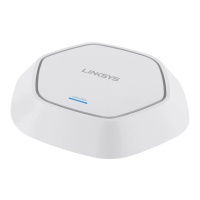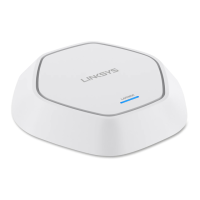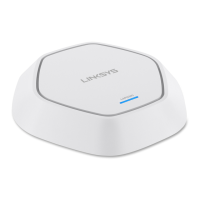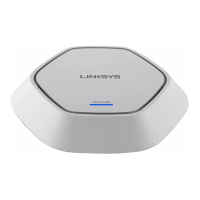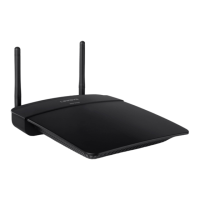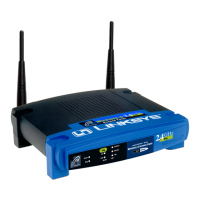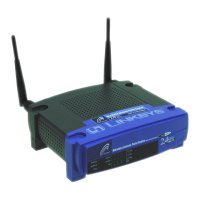72
Section 3: Configuring the Access Point
LAPAC1750PRO Access Point Software User Manual
IP TOS Mask Enter an IP TOS mask value to identify the bit positions
in the TOS Bits value that are used for comparison
against the IP TOS field in a packet.
The TOS Mask value is a two-digit hexadecimal
number from 00 to ff, representing an inverted (i.e.
wildcard) mask. The zero-valued bits in the TOS Mask
denote the bit positions in the TOS Bits value that
are used for comparison against the IP TOS field of
a packet. For example, to check for an IP TOS value
having bits 7 and 5 set and bit 1 clear, where bit 7 is
most significant, use a TOS Bits value of a0 and a TOS
Mask of 00. This is an optional configuration.
IPv6 ACL
Protocol Select the Protocol field to use a Layer 3 or Layer 4
protocol match condition based on the value of the
IP Protocol field in IPv4 packets or the Next Header
field of IPv6 packets.
Once you select the field, choose the protocol to
match by keyword or protocol ID.
Source IPv6
Address
Select this field to require a packet’s source IPv6
address to match the address listed here. Enter an
IPv6 address in the appropriate field to apply this
criterion.
Source IPv6 Prefix
Len
Enter the prefix length of the source IPv6 address.
Source Port Select this option to include a source port in the
match condition for the rule. The source port is
identified in the datagram header.
Once you select the option, choose the port name or
enter the port number.
Destination IPv6
Address
Select this field to require a packet’s destination IPv6
address to match the address listed here. Enter an
IPv6 address in the appropriate field to apply this
criterion.
Destination IPv6
Prefix Len
Enter the prefix length of the destination IPv6 address.
Source Port Range Enter the port range to match to the source port
identified in the datagram header. The port range is
0–65535 and includes three different types of ports:
• 0–1023: Well Known Ports
• 1024–49151: Registered Ports
• 49152–65535: Dynamic and/or Private Ports
To specify a single port, use the same value for the
start and end range.
Destination Port Select this option to include a destination port in the
match condition for the rule. The destination port is
identified in the datagram header.
Once you select the option, choose the port name or
enter the port number.
IPv6 Flow Label Flow label is 20-bit number that is unique to an IPv6
packet. It is used by end stations to signify quality-of-
service handling in routers (range 0 to 1048575).
